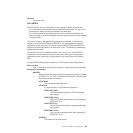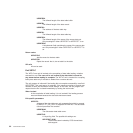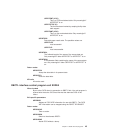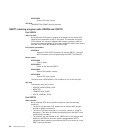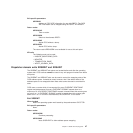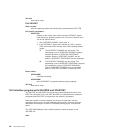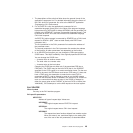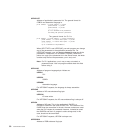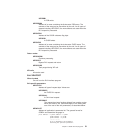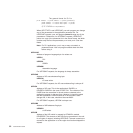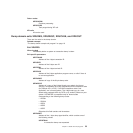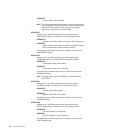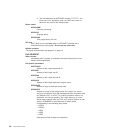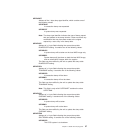UEPAPLIST
Address of application’s parameter list. The general format for
COBOL and assembler language is:
plist address --> parm1 address --> parm1
parm2 address --> parm2
parm3 address --> parm3
..............
up to a maximum of 18 parameters
excluding the optional parmcount.
The general format for PL/I is:
plist address --> parm1 address --> parm1 (parmcount)
parm2 address --> locator descriptor --> parm2
parm3 address --> locator descriptor --> parm3
..............
up to a maximum of 18 parameters
When UEPCTYPE is not UEPCSHIP, your exit program can change
any of the parameters in the application parameter list. For
UEPCSHIP requests, your exit program cannot change any of the
parameters. Furthermore, for UEPCSHIP requests, UEPAPLIST
points to a copy of the parameter list in the above format, but which
contains only the first two parameters, parm1 and parm2.
Note: For PL/I applications, parm1 may or may not contain a
parameter-count. Your exit program should check this field
before using it.
UEPLANG
Address of program language byte. Values are:
UEPPLI
PL/I
UEPCBL
COBOL
UEPASM
Assembler language.
For UEPCSHIP requests, the language is always assembler.
UEPIOAX
Address of I/O area existence flag byte:
UEPIOA1
I/O area exists.
For UEPCSHIP requests, the I/O area existence flag is always off.
UEPIOA
Address of I/O area. This is the application’s IOAREA, or
DFHEDP’s IOAREA in the case of EXEC DLI. The contents of the
IOAREA can be overwritten in the exit: the new contents are used
when the DL/I request is processed. However, it should be noted
that IOAREAs can be in a program’s static storage and, in this
case, should not be overwritten.
For UEPCSHIP requests, UEPIOA is always zero.
UEPPSBNX
Address of PSB existence flag byte:
50 Customization Guide




